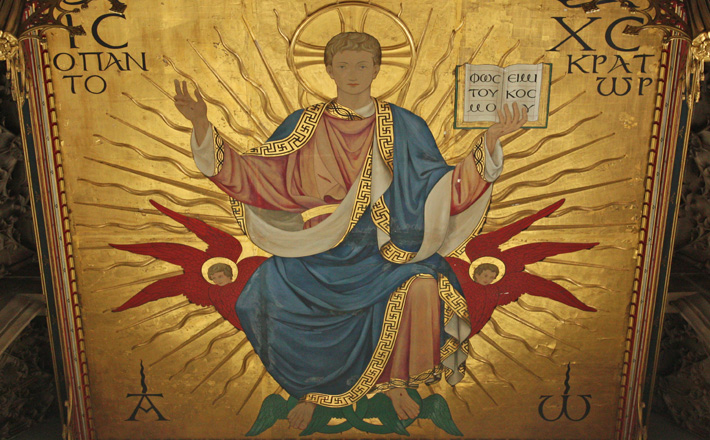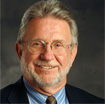Commentary on Daniel 7:1-3, 15-18
Daniel Chapter 7: four great beasts, resembling a winged lion, a tusked bear, a four-headed leopard, and a ten-horned and iron-toothed monster.1
No wonder Daniel says, “My spirit was troubled within me, and the visions of my head terrified me.” Who wouldn’t react similarly? What are these creatures, and what are they doing in the Bible?
Well, this is apocalyptic literature, of course. But, then, what is it doing in the Bible? Your teens and young adults may understand if you compare biblical apocalyptic to graphic novels like, perhaps, the Sandman series by Neil Gaiman and similar literary expressions of fantasy and science fiction. These books give writers and illustrators free reign to exercise their imagination, sometimes about worlds of demons and evildoers that resemble very much the depictions of the beasts here in Daniel 7. Younger hearers — and their parents! — might understand if you compare these beastly characters to the Death Eaters, Dementors, and other creepy characters in the Harry Potter series.
You will need to help people understand that the comparison is about the genre or literary form of the texts, not about whether they are true or untrue. Just as Jesus can use parables for teaching and truth telling (which are, of course, technically fiction), the Bible can use the fantastic images of apocalyptic to proclaim God’s ultimate victory over evil — and, for Daniel, the coming demise of the Greek tyrant Antiochus Ephiphanes — without thereby requiring or endorsing a vision of this world (or the next) that literally follows the script of these passages.
Writers and graphic illustrators have an “unlimited special-effects budget” (Gaiman)2 to tell the stories they see in their heads — so did the book of Daniel. One could say, calmly and rationally, that the world is a bleak and dangerous place, or one could make the point more fully and dramatically through apocalyptic fantasy. The latter genre will more quickly trouble and terrify us (as they did for Daniel), which is the point.
But it is not the final point. The final point is that in the midst of this highly troubled and dangerous world, God is present, a God more powerful than all the beasts — a God who loves and nourishes rather than hates and devours. It is in this God we are given hope and meaning, life and salvation “forever and ever,” as the text announces.
What are our devouring beasts? Preachers might want to name these for their particular contexts, recognizing, of course, that such spiritualization of the text moves beyond its historical sense. But since its historical sense names it as “a dream and visions,” flights of homiletical fancy seem particularly warranted. What is it that plagues the people in the time and place of your sermon?
For Daniel, most interpreters agree, the beasts represented the powerful kingdoms of Babylon, Media, Persia, and the Greek empire of Alexander the Great, which had, consecutively, dominated and then literally subjected Israel for some five centuries by the time the book was written. So, what holds us captive? For a more dangerous sermon, you could explore what does it mean that many in the world today, rightly or wrongly, would describe the American “empire” in similar beastly language — even as we sometimes demonize, say, the Islamic world for the attacks of some who claim to represent it? What will Christians do in the face of all this?
Astonishingly, the text omits (as I would not) verses 13-14 that describe the figure that comes after the terrifying beasts, the vision of “one like a human being” (“son of man” in the Aramaic original). These seem to be the heart of the chapter, and we could almost stop with the mere arrival of this person and be comforted already. To see a human figure “coming with the clouds of heaven” is itself a relief, following all those monsters.
Interpreters disagree about whether this figure is meant to be an angel, Israel, the messiah, or someone else, but the key, I think, is that it is human. God deals with us and saves us, even in the midst of beastly terrors, through human means, in human form. Because of this, the New Testament is able to use this passage from Daniel to describe Jesus as the “Son of Man coming in clouds” at the end of time (Mark 13:26; 14:62).
But we do not need to wait until the end of time to “possess the kingdom forever,” as Daniel 7:18 promises. The last line of “A Mighty Fortress Is Our God” gets it right: “The kingdom’s ours forever” — already — because of the victory over all the beastly powers, including sin, death, and the devil, won by God through the death and resurrection of Jesus Christ.
The interplay between Luther’s hymn and the Lord’s Prayer is intriguing: “The kingdom’s ours,” wrote Luther; “Thine is the kingdom,” we pray in the Lord’s Prayer. Exactly right: the kingdom’s “ours” only because it is “thine” (God’s). The kingdom (this world, the world to come, all that is) belongs to God, not to the beasts and demons. And a gracious God freely gives it to all God’s children. This is what makes us all together the “saints” of God that today’s festival observes, sharing that status with all past, present, and future believers who have been rescued from their personal and cosmic beasts and brought by Jesus into the loving arms of a gracious God.
Given the hope and strength of that safe home, we need not wait either for the end of time to confront the beasts of this world — again, whether personal, political, or mythic. The “Son of Man,” who comes to face down the powers of the world in Daniel, will finally be seen in the Gospels to be our Lord Jesus, but the title applies often in the Bible to all of us — sons of men, daughters of women, human persons, saved and set free by God to make a difference in the world now. That seems to be what “saints” are for.
Notes:
1 This commentary was originally published on the site on November 7, 2010.
2 See the interview online here.


November 6, 2016